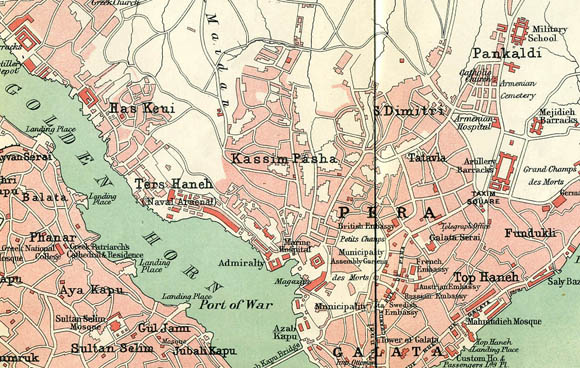
The New Yorker magazine has published an article exploring the Armenian past of the Taksim Square in Istanbul.
“Considering the symbolism with which the site has been imbued, it is an uncanny and unpleasant fact of history that, for an entire people, Taksim Square already represents the demolition of the past. In an alleyway in GeziPark, activists recently installed a makeshift tomb marked “Armenian Cemetery Sourp Hagop, 1551-1939: You took from us our cemetery, you will not have our park!”
Author of the Article Emily Greenhouse reminds that centuries ago members of Istanbul’s Armenian community were buried beneath the place where the protesters stand today.
“In the sixteenth century, when Suleiman the Magnificent was sultan of the Ottoman Empire, a group of conspirators is said to have approached an imperial chef, Manuk Karaseferyan, with a plan for him to poison the sultan’s dinner. Karaseferyan, however, reported the assassination plot to Suleiman, who offered him a favor in return. Karaseferyan requested a place for his people, the Armenians, to be buried. The Pangalti Armenian cemetery would become the largest non-Muslim cemetery in Istanbul’s history, although, after an outbreak of cholera in the eighteen-sixties, Armenian burials moved to the city’s Şişli district,” the article reads.
“When the First World War began, there were two million Armenians living in the Ottoman Empire; by 1922, fewer than four hundred thousand remained—a slaughter of 1.5 million that historians call a genocide. The campaign against Armenians involved confiscating their land, such as the cemetery; it was razed in the nineteen-thirties. Now part of GeziPark, it is the site of hotels, apartment buildings, and a Turkish Radio and Television center. Gravestones remain on view, however: they were used to construct stairs,” the author writes.
“In 1919, a memorial to the Armenian genocide was built in the Pangalti cemetery, but it was destroyed in 1922, years before GeziPark was erected. Every year, a Turkish human-rights group called DurDe organizes a silent commemoration on April 24th, when, in 1915, several hundred Armenian intellectuals were rounded up for execution. It intends to reinstall a memorial in GeziPark, but pressure from nationalists has prevented this thus far,” the article continues.
Cengiz Alğan, a member of DurDe, told Le Monde, “All the political parties are killing each other, but when it’s about Armenians, there is always a consensus.”
Click here for the complete article.
Photo from “Black’s Guide: A Guide to Constantinople,” by Demetrius Coufopoulos.








